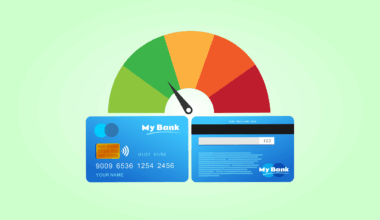Communicating Pricing and Discounts Persuasively
In sales, communicating pricing and discounts requires not only clarity but also a touch of persuasion. Effective communication informs the customer about the product’s value while offering sensible pricing that aligns with their needs. When discussing price, start by highlighting the benefits or unique features of the product or service. This establishes its value and justifies the cost. A fundamental aspect of this communication involves the strategic use of language. Using positive phrasing can pique the interest of customers and maintain engagement during the discussion. It’s also crucial to understand the customer’s perspective when discussing pricing. This means actively listening to their needs and responding accordingly. By addressing any concerns related to affordability or perceived value, you can create a supportive environment for negotiation. Additionally, utilize data to back up your claims about value, which can reinforce your argument about price justifications. Employing a tailored approach can yield more successful outcomes in your sales conversations. Understanding the psychological factors that influence buying decisions enhances your ability to convert these discussions into meaningful transactions.
Clear communication about discounts also plays a significant role in convincing customers. Discounts can stir interest and urgency, driving faster purchasing decisions. When presenting discounts, immediately highlight how they enhance the overall value proposition of the product or service. This strategy not only serves to attract attention but can significantly impact perceived savings. Furthermore, be cautious with the figures you present, ensuring that they are easy to understand. Use percentages and clear dollar amounts in a straightforward manner to avoid any confusion. Transparency in the discount process fosters trust, which is essential in any sales environment. Explain how long the discount is available and under what terms; this clarity can motivate customers to act quickly. Crafting the message surrounding discounts must also invoke a sense of urgency without appearing pushy. Phrasing such as “limited-time offer” or “while supplies last” encourages action. Additionally, aligning the discount with a customer’s previous behavior can further personalize the message, making it more appealing. Keeping track of customer preferences can help position discounts effectively. Shaping your communication around these aspects can make a difference in your success rate.
The Importance of Context in Pricing Discussions
Context is crucial during pricing discussions, as it allows sales professionals to tailor their approach effectively. Understanding market trends and competitor pricing helps establish a reasonable framework within which your offerings can fit. It’s essential to convey to customers why your product or service stands out amidst competitors. Create value narratives that relate product features directly to customer needs, fostering a clearer understanding of why pricing is justified. Recognize that customers may approach price discussions with preset notions based on prior experiences; addressing these effectively can make all the difference. Sharing testimonials or case studies showcases past customer satisfaction, emphasizing the product’s worth against its price. Incorporating relevant and timely examples enriches the conversation and helps customers visualize their experience. Additionally, ensure to communicate the consequences of waiting too long to purchase, framing it succinctly as a potential loss of value. This way, customers can better grasp the significance of timely decision-making. Contextualizing your pricing discussions effectively can enrich the overall customer dialogue, significantly improving persuasion outcomes.
Another critical element in discussing pricing and discounts is the power of visual communication. Employ visuals through data charts or infographics to illustrate value comparisons effectively. Visual aids can simplify complex pricing structures and make information digestible for the customer. Including compelling images can also capture attention and sustain engagement during presentations. Similarly, encourage the use of presentation tools and slides that can visually represent data while you discuss. Ensure that these visuals align closely with the message. Reiterate key points, such as the key benefits of the product, alongside visuals for impactful emphasis. Furthermore, employing digital communication tools can enhance customer interactions, particularly online or in virtual settings. Utilizing platforms that allow for real-time questioning helps replicate face-to-face discussions. This interactivity can increase customer comfort levels when discussing sensitive topics like pricing. In this era of digital interaction, maintaining an engaging communication style, coupled with strong visual supplements, is key to conveying pricing and discount information persuasively. By prioritizing visuals, you can significantly improve the efficacy of your sales conversations.
Building Relationships through Honest Communication
Building genuine relationships with customers can enhance how pricing and discounts are perceived. Trust is a cornerstone in customer relationships, and how transparently pricing is communicated contributes greatly to this element. Always be sincere when discussing pricing. If a product has a higher upfront cost, justify it with long-term savings or enhanced quality. Honesty about pricing creates a foundation for trust. This kind of relationship fosters loyalty, meaning customers are likely to return for future purchases, regardless of price. Customers appreciate when sales professionals provide them with all the necessary details to make informed decisions. Highlighting the rationale behind pricing and any applicable discounts is crucial; fostering a sense of community and connection enhances customer commitment. Additionally, use follow-up communications as opportunities to reinforce your relationship and inquire if customers have additional questions about pricing. Establishing a relationship sustains dialogue, allowing customers to express concerns or desires. By maintaining these continual connections, you can keep pricing discussions relevant and more comfortable, ultimately leading to conversions and long-term customer satisfaction. Establishing trust drastically enhances the effectiveness of pricing and discount discussions, creating a win-win situation for both parties.
Incorporating feedback from customer interactions into pricing strategies can also enhance communication efficacy. This approach shows customers that their opinions are valued and considered. Regularly collecting feedback on pricing perceptions can inform adjustments and improvements. By actively incorporating input into pricing discussions, you demonstrate adaptability to customer needs. Utilizing surveys post-purchase or during discussions provides constructive insights into customer attitudes towards pricing and discounts. Furthermore, ensure that such feedback loops remain continuous; this reinforces your commitment to customer needs. Transparency about how customer feedback shapes future pricing can further enhance trust and engagement. Listen for recurring inquiries or concerns about pricing; addressing these can optimize future communications. Listen for patterns, as these can be indicative of broader trends, benefiting your overall strategy. When customers see their insights materialize into tangible changes in pricing, it reinforces their involvement in the sales process. An adaptive pricing strategy rooted in customer preferences can markedly improve buyer interactions. Overall, ensuring that customers feel included in pricing communication generates a mutually beneficial exchange.
Leveraging Storytelling Techniques in Pricing Conversations
Storytelling techniques can offer powerful tactics in communicating pricing and discounts effectively. When presenting prices, weave narratives that illustrate the product’s journey, including challenges and triumphs, connecting emotionally with customers. Utilize relatable stories to establish empathy, showcasing how your product or service positively impacted real users. This technique helps cultivate a deeper understanding of the value behind the price tag. Furthermore, tales of significant savings experienced by other clients can be particularly compelling. This method not only builds intrigue but also creates relatability. Integrating personal testimonials or anecdotes can maintain engagement and spotlight affordability among satisfied customers. Further, ensure that the stories you tell resonate with your target audience’s interests and values, tailoring the delivery for maximum impact. An effective story aids in reinforcing the credibility of the information shared about the pricing or discount. Create an emotional connection that remains with customers long after a conversation, leading to increased retention and purchase likelihood. Through strategic storytelling, complex pricing concepts become accessible, transforming potential hesitations into curiosity and engagement. Ultimately, leveraging compelling narratives can enhance perceptions of your pricing structures.
In summary, effective communication of pricing and discounts in sales is an art form, blending transparency with persuasive techniques. By understanding customer needs, employing visual aids, and maintaining a relatable approach, sales professionals can enhance their discussions regarding pricing. The integration of storytelling further captivates customers’ attention while encouraging them to engage with the information presented. Furthermore, cultivating genuine relationships through honest communication fosters a loyal customer base, ultimately leading to repeat business and word-of-mouth recommendations. Using feedback to adapt pricing strategies creates a responsive approach that aligns with the market and enhances customer trust. All these strategies collectively contribute to an optimized communication process, invigorating opportunities for sales professionals. It’s crucial to remember that effective pricing discussions don’t merely revolve around numbers but involve fostering connections. Therefore, incorporating these persuasive techniques into everyday sales practices will yield significant benefits. Maintain enthusiasm and passion during discussions to inspire confidence in the offerings. This attitude can create lasting impressions that differentiate your sales approach. Engaging effectively in pricing and discount dialogues is about storytelling, relationship building, and meeting customer needs. With these frameworks, sales success becomes attainable.


